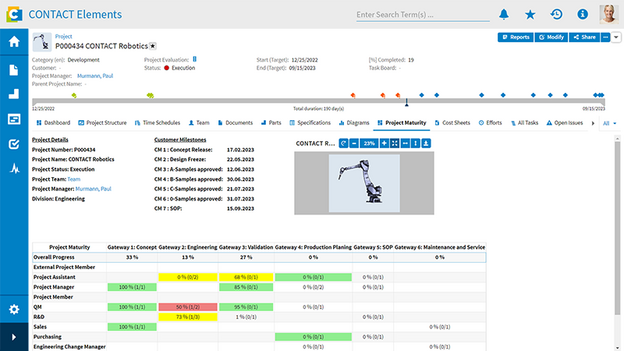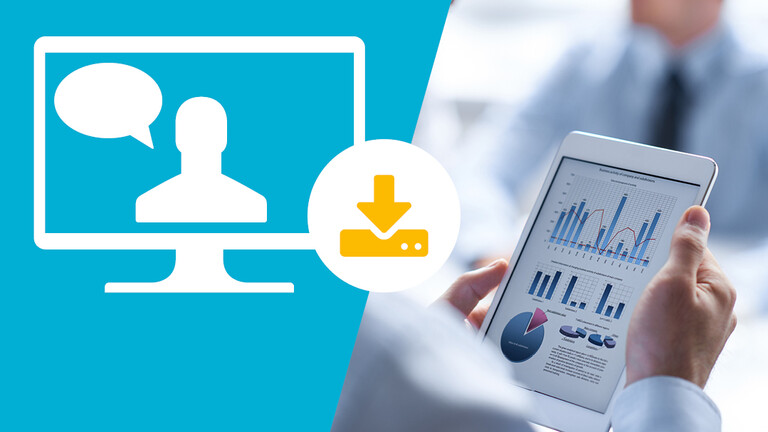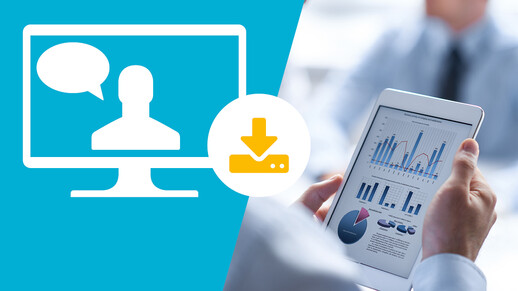Monitor project progress and product maturity
Product development projects entail significant risks. Without quality assurance and precise controlling, there is a risk of cost overruns, schedule delays, and quality losses. With the functionalities offered by CONTACT Elements for Controlling and Maturity Management, you unite the product and project worlds within a single software. Parallel to project controlling, you manage the product's maturity level. In case of problems such as deficient results, sources of error, or schedule risks, you can intervene early. This combination of controlling measures and maturity models reliably safeguards your project processes and product quality.
Benefits
- Safeguard the product development process with quality gates and maturity levels
- Efficiently manage and control project progress
- Systematically manage and modify product data
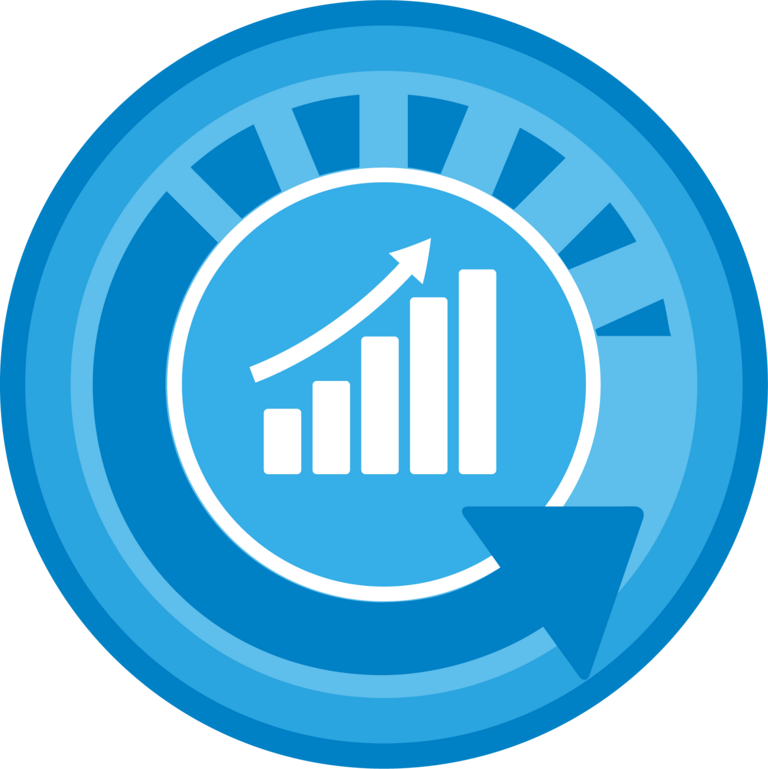
Safeguard the product development process with quality gates and maturity levels
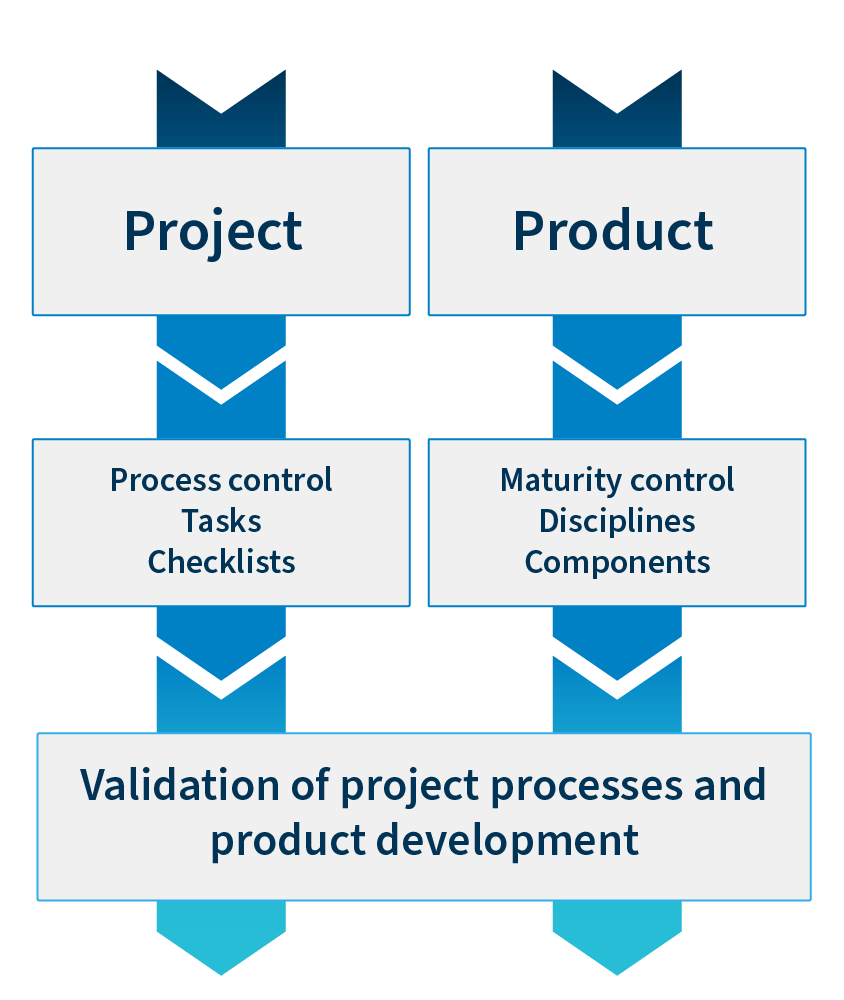
With CONTACT Elements Controlling & Maturity Management, you safeguard your product development on two levels: Firstly, procedurally, by ensuring the fulfillment of defined quality criteria through Quality Gates during the transition between project phases. Secondly, substantively, through the monitoring of the product's maturity level. This allows you to monitor the product's evolution regarding its maturity in the respective development phases. You systematically control adjustments and further developments.
Safeguard the product development process with quality gates and maturity levels
With CONTACT Elements Controlling & Maturity Management, you safeguard your product development on two levels: Firstly, procedurally, by ensuring the fulfillment of defined quality criteria through Quality Gates during the transition between project phases. Secondly, substantively, through the monitoring of the product's maturity level. This allows you to monitor the product's evolution regarding its maturity in the respective development phases. You systematically control adjustments and further developments.

With CONTACT Elements Controlling & Maturity Management, you safeguard your product development on two levels: Firstly, procedurally, by ensuring the fulfillment of defined quality criteria through Quality Gates during the transition between project phases. Secondly, substantively, through the monitoring of the product's maturity level. This allows you to monitor the product's evolution regarding its maturity in the respective development phases. You systematically control adjustments and further developments.
Efficiently manage and control project progress
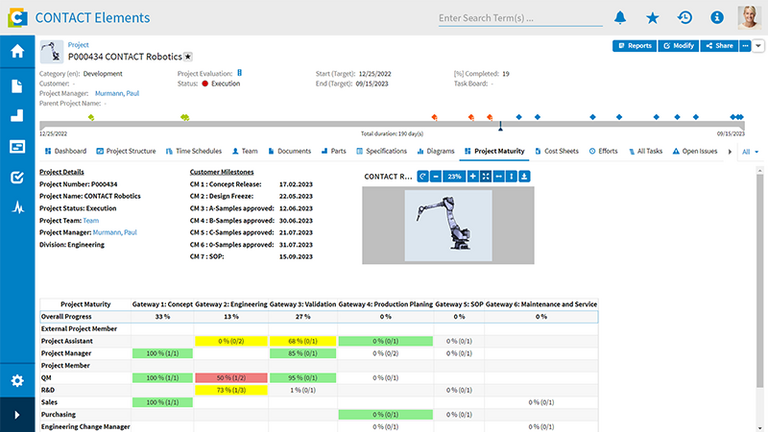
Quality Gates are the central element for securing your project processes. As obligatory milestone checklists, they verify at each phase transition whether the quality criteria for entering the next project phase are met. Progress levels, traffic light ratings, and forecast dates help to identify disruptions during the project phases early and initiate countermeasures. This ensures that you meet the defined quality requirements during the transition between project phases.
Efficiently manage and control project progress
Quality Gates are the central element for securing your project processes. As obligatory milestone checklists, they verify at each phase transition whether the quality criteria for entering the next project phase are met. Progress levels, traffic light ratings, and forecast dates help to identify disruptions during the project phases early and initiate countermeasures. This ensures that you meet the defined quality requirements during the transition between project phases.
Quality Gates are the central element for securing your project processes. As obligatory milestone checklists, they verify at each phase transition whether the quality criteria for entering the next project phase are met. Progress levels, traffic light ratings, and forecast dates help to identify disruptions during the project phases early and initiate countermeasures. This ensures that you meet the defined quality requirements during the transition between project phases.
Systematically manage and modify product data

Corresponding to Quality Gates for project processes, the product maturity level serves as an important control and management instrument for the systematic administration and adaptation of product data. You can flexibly supplement predefined maturity phases, configured as standard in the system (such as Idea or Prototype), with phases like Concept, Design, or Validation. This allows you to accurately describe the exact development status of your product. Key Performance Indicators (KPIs) and other metrics provide a quick overview of the product maturity level. This enables you to intervene early if problems arise. The metrics can be freely defined and automatically calculated – for example, for the fulfillment of functional requirements or specified target criteria.
Systematically manage and modify product data
Corresponding to Quality Gates for project processes, the product maturity level serves as an important control and management instrument for the systematic administration and adaptation of product data. You can flexibly supplement predefined maturity phases, configured as standard in the system (such as Idea or Prototype), with phases like Concept, Design, or Validation. This allows you to accurately describe the exact development status of your product. Key Performance Indicators (KPIs) and other metrics provide a quick overview of the product maturity level. This enables you to intervene early if problems arise. The metrics can be freely defined and automatically calculated – for example, for the fulfillment of functional requirements or specified target criteria.

Corresponding to Quality Gates for project processes, the product maturity level serves as an important control and management instrument for the systematic administration and adaptation of product data. You can flexibly supplement predefined maturity phases, configured as standard in the system (such as Idea or Prototype), with phases like Concept, Design, or Validation. This allows you to accurately describe the exact development status of your product. Key Performance Indicators (KPIs) and other metrics provide a quick overview of the product maturity level. This enables you to intervene early if problems arise. The metrics can be freely defined and automatically calculated – for example, for the fulfillment of functional requirements or specified target criteria.
ON DEMAND WEBCAST
Real-time project controlling
Learn more about work products as part of project management, the Quality Gate Approach, open issue management and work-in-context collaboration.
ON DEMAND WEBCAST
Real-time project controlling
Learn more about work products as part of project management, the Quality Gate Approach, open issue management and work-in-context collaboration.
Related Elements
Track progress, improve performance and achieve targets
Define indicators for products, projects and processes to improve your performance
Specify target values for product attributes and record actions to be taken in the event of discrepancies
Keep an eye on your indicators and the success of actions taken at all times
Record and resolve complaints and defects
Increase customer satisfaction and reduce series startup costs
Implement seamless processes from error detection to solution archiving
Further information
Would you like to find out more about this topic? Choose one of the following information offers.

